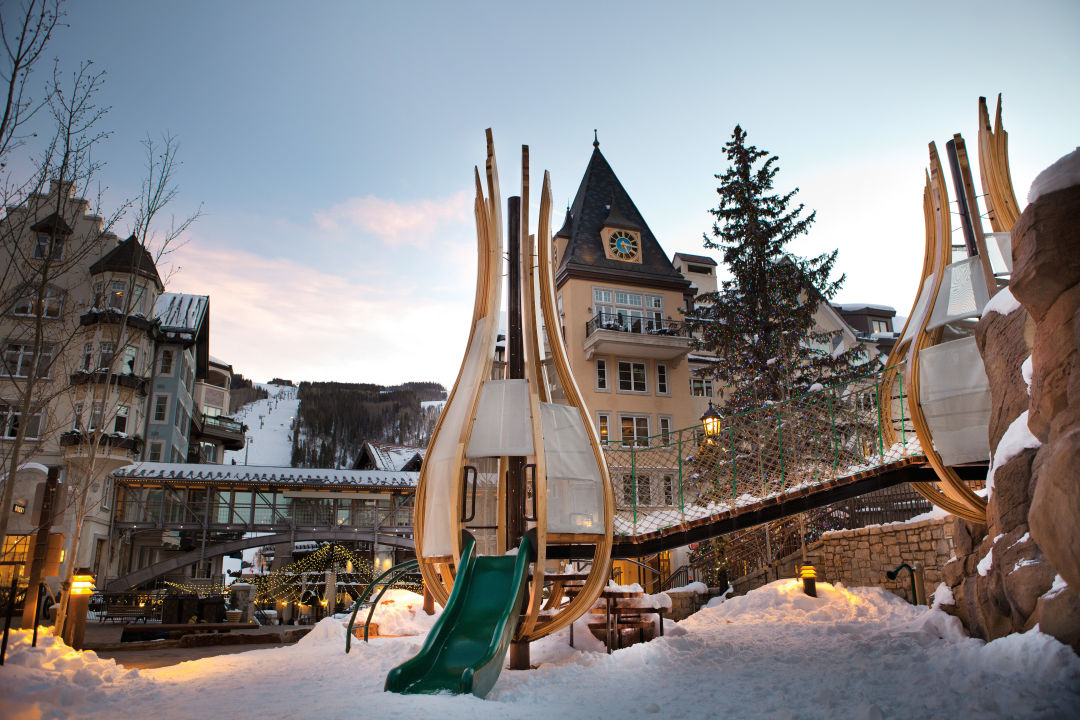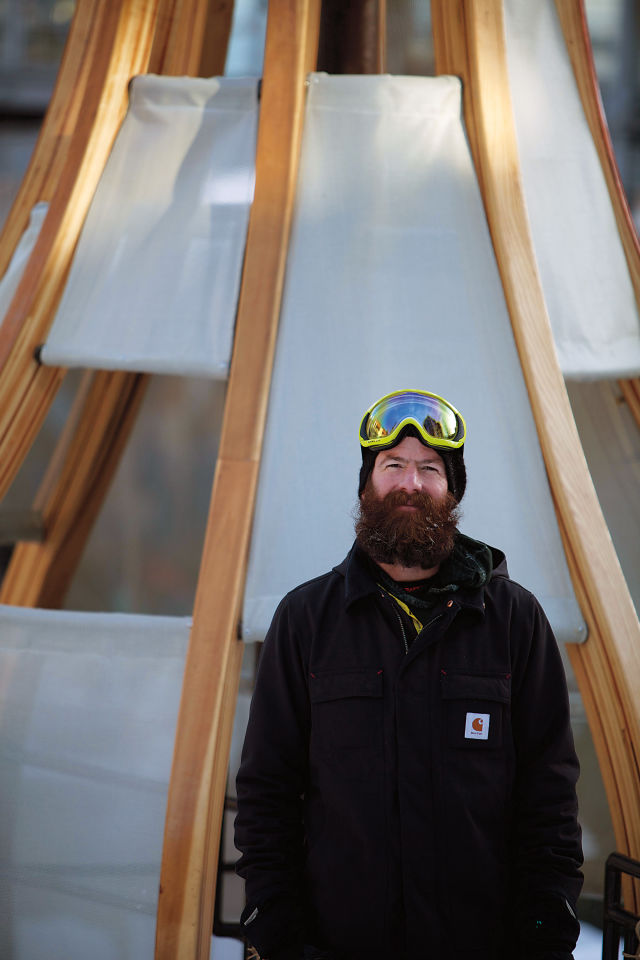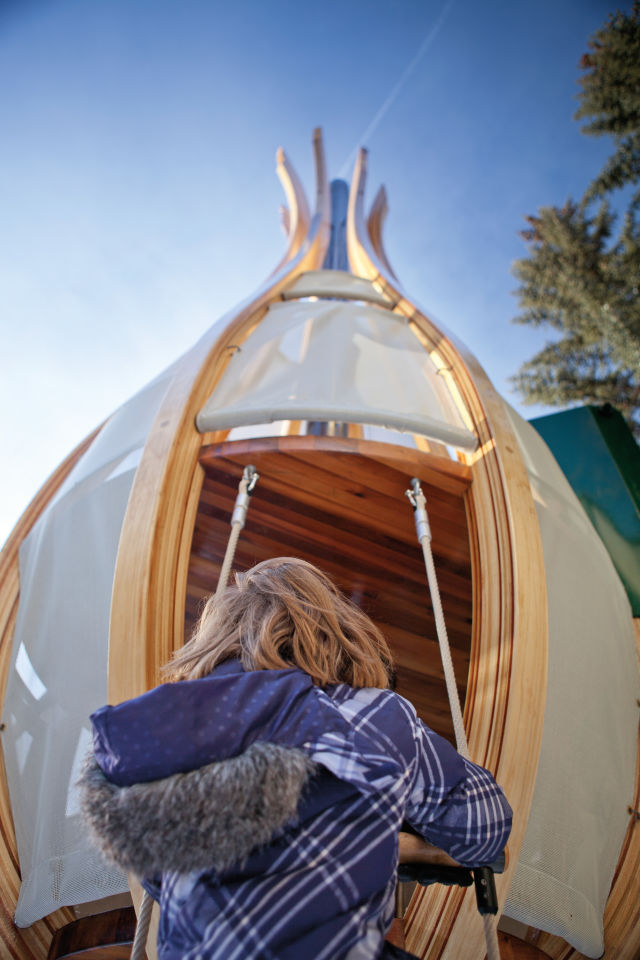Artist At Play

Image: Brooks Freehill
Before Mike Moore was an architect, he was an artist: not a painter but a sculptor, although more Banksy than Michelangelo. As an example he cites his first “noncommissioned” public work, at an elementary school in Berkeley, where he majored in environmental biology and fine art at the University of California in the late 1980s.
“In the beginning, I was doing urban sculpture on the fly, in guerrilla style,” recalls Moore, a Boulder resident who in the winter cultivates an Abominable Snowman beard. “We made this big technical yeti, like a bigfoot, out of things we found. We installed it on a children’s playground in the middle of the night, and when the kids came to school the next day, there was this monster creature on their playground.”

The same ethos of playfulness and sustainability informs Tres Birds Workshop (tresbirds.com), the Denver-based architecture/general contracting firm Moore founded in 2000, after earning a master’s degree in green architecture from the University of Colorado. And while he may have shifted to formally commissioned works, his firm is hardly formal, because Moore doesn’t make buildings so much as sculpt them.
Consider “Swoon,” the 7,000-square-foot Boulder residence Tres Birds completed in September 2013 for artist Rebecca DiDomenico. The energy-neutral home—it draws heat from geothermal wells and generates electricity from a carport solar array—has thirty-inch-thick rammed-earth walls made from 200 tons of compressed local topsoil and resembles a giant jelly roll.
But the work Moore’s best known for in ski country grew out of a job he did for Burton snowboards. In 2005, he converted a windowless warehouse in Denver into a wholesale showroom for the company’s equipment buyers, cutting open the roof to create a sunlit atrium, using reclaimed wood from bowling-alley lanes, and, as on the jelly roll home, using a photovoltaic array to create electricity.

“Jake Burton came to the space one snowy night and said, ‘Who did this? This is what I’m looking for!’” Moore says. “For the next few years, we did all the showrooms for Burton’s flagship retail stores around the world.” That includes Burton’s Lionshead store in the Arrabelle, completed in 2007, in which a reclaimed wood floor rises skyward at one end, curling like a wave, and shoppers sit in carved tree stumps ogling the latest boards set out in a kaleidoscopic display.
So when the Town of Vail’s council earmarked $850,000 for a new artist-designed playground in the former Sun Dial Plaza above the skating rink in Lionshead last year, Molly Eppard, the town’s Art in Public Places coordinator, contacted Moore. After coming to Vail to inspect the site and tour the town’s six other artist-designed playgrounds, he did what he always does when presented with a commission: he interviewed the end user. Instead of consulting Vail’s elected officials, Moore questioned his two young daughters and their friends about their playground habits, learning that they most often pretended to be animals or played a “hot lava” game of follow-the-leader. Riffing on those themes, he presented the town with sketches of an aerial playground with a half-dozen pod-like bird nests connected by rope bridges.
“What happens is that the artist will come up with some pretty off-the-wall idea, and we turn that into a safe, affordable play area,” says Gregg Barrie, Vail’s chief landscape architect. “His first rendition, he had five or seven of these pods nested up in the trees with no way for parents to get up to them.”
The compromise included three pods perched atop boulders and poles and connected by slides, rope bridges, and nets; other features include a textured rock-climbing wall and a splash pad for hot summer days. Moore and his team assembled the nests—tulip-shaped pods with stainless steel mesh walls and frames of laminated beetle-kill and boxcar wood—at the Tres Birds Workshop, then transported them by flatbed trailer to the site.
“Hopefully there will be kids from all over the world interacting with this and having fun,” says Moore, who in January visited the newly christened “Sunbird Park” (named after a lodge that predated the Arrabelle). “Adults will enjoy it, too, because at night the nests are lit from within; they look like orbs from space.”
Find the one with the hammock, he advises, then climb into it and stare up the starlit sky. It’s all about connecting kids’ play with nature—and reconnecting adults with a child’s capacity to wonder.






































